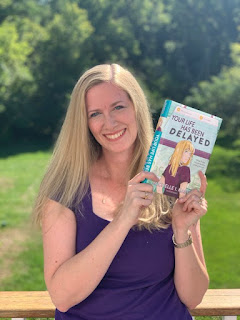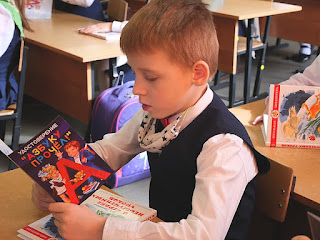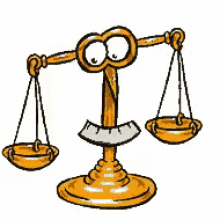
No Spring Chicken: Stories and Advice from a Wild Handicapper on Aging and Disability by Francine Falk-Allen
Note: This is a GENRE SWITCH debut. Previous book was a memoir and this one is self-help. First book, Not a Poster Child: Living Well with a Disability—A Memoir, was published in 2018 and is still selling. Second book, Stories and Advice from a Wild Handicapper on Aging and Disability, came out this year.
1- How might a Wild Handicapper who is Aging and has a Disability best deal with the current pandemic, especially if their family and/or caregivers are opposed to masks and vaccines?I’m one of the Wild Handicappers and am aging with a disability; the intention of the book is additionally to reach people who are not yet disabled but are beginning to have some physical limitations, as nearly everyone eventually does. I handled the pandemic by going for “walks,” taking my scooter, and my husband walked with me, out in our lovely county. I also worked out in our pool several times a week if it was not raining, and did floor yoga daily, all of which I suggest and describe in No Spring Chicken. I saw friends occasionally outside for lunch, seated on opposite sides of a table on our decks. I didn’t know anyone who was unwilling to wear a mask, and I only know one person who has not been vaccinated, so did not have to deal much with opposition to intelligent pandemic behaviors. Unfortunately I told my friend that she cannot visit inside our home, only on the patio, with a mask, so I have not seen her for nearly two years. I have done so many Zooms, especially with my writing group, that I am champing at the bit for our Covid cases to go back down again so we can meet in person at Starbucks or the library. We have all really missed that.
2- Would you please, in 160 characters or less, give a #WriteTip ?Create scenes in writing; make it real for people. Show, don’t tell. Pull out of your memory: how do people talk? What are their gestures?
3- What most motivates you to read a new book?Hearing that it’s really good from several sources; checking out the first few pages to see if it hooks me; this is usually accomplished with good, literary writing leading me into the book, making me want to know What’s Next.
4- How is debuting in self-help different from writing a memoir?Well, this is actually a debut in self-help for me and my first book was a memoir. Much of what I have written in this second book has memoir-like stories to illustrate it. I think that even if I wrote a manual, I would still insert vignettes to make the book more entertaining for the reader. But this book doesn’t have an arc, as the first one did. I worked very hard on Not a Poster Child to make it carry you forward, revealing a little at a time, just as a good novel would. A memoir is a story. This second book is practical advice with stories to illustrate my experience and lighten up the factual approach. It has three parts which stand on their own, rather than needing to be read from cover to cover in order to understand the whole.
5- Would you share a picture with us of your book in a fun setting?
I’ll attach a picture of me holding my book in my back yard at my launch party (attended by 40 fully vaccinated friends, writing buddies and musicians).
6- It's Self Improvement Month! Would you please share one self-improvement tip with us?
A self-improvement tip: when wanting to make a change in your life, such as exercising more or losing weight, take one step at a time if necessary. You don’t have to start exercising an hour a day nor do you have to go on an extremely limiting diet. Small changes often last longer; add more as you succeed. That’s a two-part One Tip.
7- What's your Twitter handle, and do you have two or three writer friends on there to shout-out to for #WriterWednesday ?I am not on Twitter.
Alternative question declined.
8- Do you have a favorite #bookstagram image or account/ profile?I’m not on Instagram. Sorry. I’m 73 and just being on Facebook has been very time consuming!
Alternative question declined.
9- Are you a Plotter, Pantser, or Plantser, and how did you adopt that style?I’m a plantser. I usually have an overall idea of what I want to say or accomplish; I either dig in and start writing, or I write a loose sort of essay listing what I want to be sure to include. For a short piece such as a magazine article, I just think a lot and then start writing, then edit repeatedly. But for a long piece I make some notes and make sure I include all of them if it’s realistic to do so. I would like to write a creative non-fiction that will turn out to be a novel, and I wrote a nine-page essay that is my “outline.”
10- What does your basic writing schedule look like, and how often do you write?I write at least four hours a week, usually in the afternoon after my domestic tasks are complete; rarely four hours a day. I don’t usually write on the weekends unless the muse visits me. When I was really into one of my books, I wrote more like 10-20 hours a week. During some of that time I was working full time, and I do have a physical disability, so I let myself write when I feel up to it, not out of obligation.
11- What is your favorite book by someone else, what's the author's Twitter handle, and what do you love most about that book? #FridayReads book recommendation time!
Author name: Louise Erdrich
@Chatt_LErdrich
Title: The Last Report on the Miracles at Little No Horse
Love because: It’s a fantastic story, in the sense that it seems like it could not possibly have happened, but it’s based on fact. And Erdrich unfolds it in such a way that each event leads to the next and makes the tragedy of Ojibwe children having been institutionalized in Anglo schools partner perfectly with the sensational aspect of one character’s sham persona. She can take the scarring effect of removal of heritage and marry it with the humanity of both the oppressed and oppressor so that the reader might find a way to love or at least appreciate the point of view of both.
12- What emotions do you hope your book will evoke for the reader? Primarily, encouragement, but also joy, abandoning some inhibition or feeling adventuresome, perhaps courage, self-esteem or self-confidence, introspective. Perhaps some of these are not so much emotions as attitudinal responses.
13- What kind of impact do you hope your book will have?Impact I hope for: I hope that more “elders” will: get out more, try a little travel and not say it’s too much trouble; get a little more exercise; eat a little better diet; and find groups of people with like interests or physical abilities. I hope that the family members of aging adults will adjust their expectations and find ways of relating and being with them that will work for both. I hope all people will find parts of the book amusing and even a little enlightening regarding how it is to live with limited physical function.
14- What is your favorite creative non-writing activity to do?My favorite creative non-writing activity… hmm… probably singing, which I don’t do very often anymore. Gardening is probably equal, but, it’s more work! Used to be painting. We continue to change as we age.
15- In what ways are the main characters in your book diverse? diversebooks.org #WeNeedDiverseBooks My book is diverse in that it is for and about the aging community (and for their adult children and friends, with hope for better understanding), and about the population which has physical disabilities. Those are communities I am part of and know most about.
16- What method do you feel is the best way to get book reviews?Method to get book reviews: Ask for them. On Facebook, in conversations with others when they mention they want to read or have read my book, in blog posts, in podcasts, in interviews. Let people know that they individually can drive the success of a book. It’s better not to use the phrase “Reviews drive sales;” they don’t always, but they sure help. I usually say that they are important for “small authors like me.” Ask, humbly, IF they like the book, that they do a review.
17- What was the deciding factor in your publication route?I went with hybrid for both my first and second books. There were several deciding factors, not just one. I felt that I didn’t have time to obtain an agent and wait the usual two years to find a publisher, because I was in my late sixties for the first, and early seventies for the second―but I wanted national traditional distribution into stores and libraries without having to manage that myself. So I went with a highly regarded hybrid press—She Writes Press―partly because they vet their material and print good, considered, professionally edited material. I didn’t want to be aligned with an outfit that would print all writing in any condition. I also liked that I could choose my title and cover and what got edited out, unlike traditional publishers.
18- What's the biggest writing goal you hope to accomplish in your lifetime?What’s the biggest writing goal I hope to accomplish in my lifetime: That people will love my books, even if I only sell a few thousand, and feel that my writing made a positive difference in their lives. I am almost afraid to say that I also want to write a novel about a family story that is important to me. It feels like a mammoth undertaking in this era when I will soon be in my mid-seventies.
19- Would you please ask our audience a question to answer in the comments?What is a book that impressed you deeply, and how so? Did it change anything about your thinking, attitude or behavior?
20- Anything else you would care to share about your book and yourself?From the travel section of my book: “Travel is not only a refreshing change from daily routine, it also expands minds and teaches us about other people and places—even if they are just fifty miles away from our usual domain. I have found that narrow-mindedness is sometimes only inexperience wearing a cloak of apprehension.”
Bio:
Born in Los Angeles and having lived nearly all of her life in northern California, Francine Falk-Allen had polio in 1951 at age 3, was hospitalized for 6 months, and lived most of her life as a handicapped person trying to be a “normie.”
Despite her partially-paralyzed leg and severe limp, Francine has traveled the world. She also appeared in the Nobel Prize/PBS documentary, “The War Against Microbes,” as the only representative of a disease now mostly eradicated by a vaccine.
Her first book Not a Poster Child: Living Well with a Disability—A Memoir, won gold and silver awards and was on several best books lists in 2018 and 2019. Her newest book, No Spring Chicken: Stories and Advice from a Wild Handicapper on Aging and Disability, has also received the Kirkus star, given to only 10% of the books reviewed in Kirkus Reviews.
Francine resides in Marin County, California, with her husband, Richard Falk, and spends a significant amount of time managing the effects of post-polio. She also facilitates a polio survivors’ group, as well as a writing group, Just Write Marin County, and sits on the City of San Rafael ADA Accessibility Committee. She loves the outdoors, swimming, gardening, British tea, and a little champagne now and then.
https://FrancineFalk-Allen.com
www.facebook.com/francinefalkallenauthor
No Spring Chicken: Stories and Advice from a Wild Handicapper on Aging and Disability by Francine Falk-Allen

















